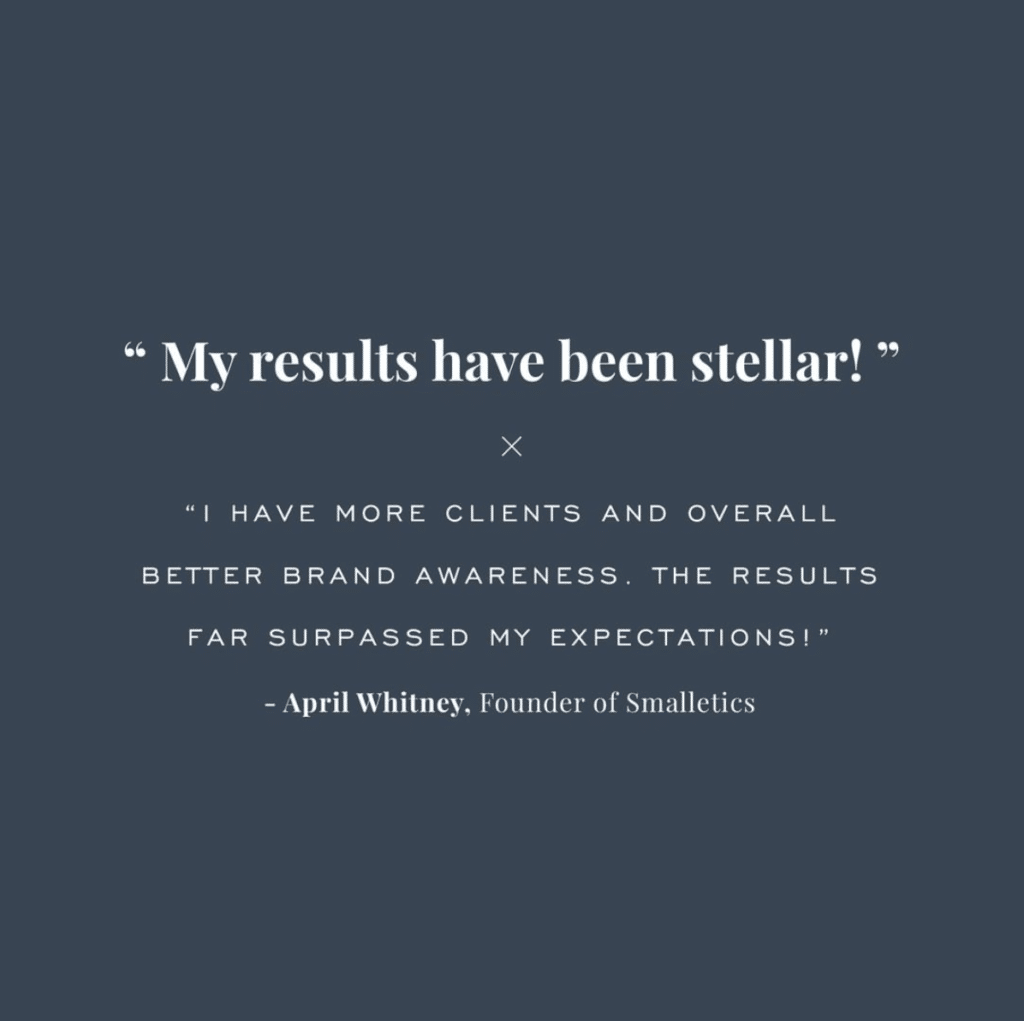There’s a lot to say about email marketing. We’re serious—a lot to say.
But before we bombard you with everything there is to know, let’s start with a basic overview so you can determine whether email marketing is right for you.
(Spoiler alert: It is. It’s right for you. Email marketing is effective and powerful, and we’ll walk you through why you should definitely be doing it.)
Organic Benefits of Email Marketing
Let’s start by talking benefits of email marketing—because after all, there’s a reason that so many businesses are doing it. Collecting emails and creating consistent content to go straight to those inboxes takes time and creativity, but when you do it right, you can expect good return.
Here are the four biggest reasons to do email marketing:
Email marketing means you’re boosting your exposure in just one more way.
You’re already putting out content on your blog, on Facebook, on Instagram, on TikTok—and it can sometimes feel a little overwhelming. But multiple avenues of getting in front of people means a greater chance they start to take notice. And of course, that means more chances for sales.
But email marketing isn’t just one more way of getting exposure. It actually might be your most effective way. Consider our next point…
You’re establishing a relationship with people who are genuinely interested in you.
It’s easy for people to hit that follow button on social media, but if they’re providing their email address and opening themselves up to regular messages from you in their inbox, it means they actually care about what you do. *These* are the people you should be most focused on reaching (rather than the thousands or maybe tens of thousands of people you have on the ‘Gram) because you have the best chance of converting them into customers.
As Till founder and our in-house email marketing guru Jesse Morquecho puts it, “Email is one of the only marketing channels where you have precise control over who you market to.”
An email marketing campaign is cost-effective.
When it comes to how much you spend on marketing versus how many customers that marketing converts, email marketing is noteworthy. The only costs involved are whatever platform you’re using to send your emails (more on those later) and the copywriter or virtual assistant you’re using to compose your message.
The return will depend on how you’re using your email sequences and what products or services you’re warming people up to. But bear in mind that this isn’t a cold audience the way some marketing efforts are. Your emails are reaching an audience that is seriously interested and maybe has even spent money with you before. “Email marketing is almost always going to have your highest ROI of any marketing platform,” Jesse says.
Email marketing lets you own your following.
In other digital realms, you’re at the mercy of an algorithm or trends. You could post all you want to Facebook, but you don’t have total control over who sees your content. You could build a great following on Instagram, but another hot new social media platform could eclipse it six months from now. You’ve probably even heard some of the horror stories of creators who were suddenly banned from TikTok for no discernable reason.
But with email marketing, you have total control over your following. You get to decide who sees what and when they see it. And you don’t have to worry about losing everybody because a platform suddenly shuts down (or worse, bans you for no reason).
Start Your First Email Marketing Campaign
To get started with an email marketing strategy, you need to collect email addresses. All the great email content in the world won’t do you any good if you don’t have at least a small following. And yes, the emphasis there is on small, because even if you have only a few people on your list, you can start sending content their way.
But the more email addresses you collect, the bigger the audience you can target with your email marketing. Here are some ways you can start collecting emails:
- Offer customers the chance to opt in when they make a purchase. They’re giving you their contact information anyway—they might as well stay in the loop about what you have to offer. Transparency is important, because it’s always a bad look for a brand to start sending unsolicited emails. Make it clear they have the choice to join your list, and it’s easy to unsubscribe at any time.
- To bring in newbies who have never made a purchase, offer them something free. It could be a digital download, a PDF, a video—anything that shows off a sample of what you have to offer. Providing their email and subscribing to your newsletter is the only real “cost,” and most people won’t mind providing that.
- Let them know about your email newsletter via other digital marketing platforms. Make an announcement on social media, or put a blurb in at the end of a blog post. People who appreciate what you do on social media will be eager to get more.
Great Email Marketing Tools
There’s one more important tool you need to get started—you need an actual email platform or email software that will let you compose, design, and send emails, plus analyze the results.
According to Davey and Krista, two great options to consider are Flodesk, which is easy to use and comes with lots of editable templates for an on-brand email aesthetic, and ConvertKit, which has plenty of powerful features but will be plainer in terms of aesthetics. Amy Porterfield is team ConvertKit, primarily because of all the automation options you get for a very low price (free!).
Great Ideas for Your Email Marketing Strategy
All right, now let’s say you have your list of emails and you have your email marketing platform—what’s next?
You should have a welcome sequence ready to go. This sequence of emails is one you can send to your initial subscribers as well as to anyone who subscribes in the future. It doesn’t have to be a long sequence. Anywhere between three and five emails over the course of a week will be enough. This sequence should be a way for your subscribers to know your brand and form a relationship with you. It should get them excited about the value you’ll be offering them in your emails to come.
The frequency of your emails will depend on how much you have to say to your subscribers. If you have a new product to announce or a sale coming up, that warrants an email. But even a weekly update from your business will help keep you at the forefront of their mind.
Remember to keep your emails simple. When you’re checking your email, you don’t want to spend a lot of time reading long blocks of text, do you? Your subscribers are the same way. Stick to one idea per email and be concise. Use a conversational tone so people feel as if they’re hearing from a friend.
Jenna Kutcher recommends making sure every email has a strong subject line that stands out in a subscriber’s inbox and gets their attention. She says to make sure every email is written with a clear goal in mind, whether that’s to sell something or just to educate your subscribers on a topic. Finish each email with a call to action so your subscribers know what to do next.
How to Keep Your Email Marketing Strategy Going
Email marketing isn’t something you try and give up on after a few months. You need to be in it for the long haul. And if you’re smart about your email marketing strategy, you can make it get stronger and stronger over time.
First, make sure you’re sending emails regularly and providing real value with each one. It can be tempting to just send an email for the sake of sending an email, but too many emails without a purpose will quickly turn your subscribers off.
Track the numbers using the analytics your email platform provides so you can see what works and what doesn’t. You can use these insights to tailor future emails and give subscribers more of what they want.
And don’t forget that you need to maintain your list. If you have subscribers who haven’t opened an email from you in six months, send them a personalized message to see whether they want to remain subscribed. If they don’t, there’s nothing wrong with trimming down your list and keeping your emails focused on those who are really getting value from your emails.
Create Paid Posts That Convert!
If you already have a highly successful organic presence, great! You have that half of the equation solved.
But if you need help creating paid advertisements that will convert more followers to customers (especially if your organic content is already giving you a strong understanding of your audience), that’s where we come in. Reach out to us today to book a discovery call or request a case study!
Want to Know More About Email Marketing?
There’s so much more we could say about email marketing, but maybe the best lesson we can offer is letting you see how we do it for ourselves. Subscribe to our email blasts here and start getting all our marketing wisdom delivered straight to your inbox.







